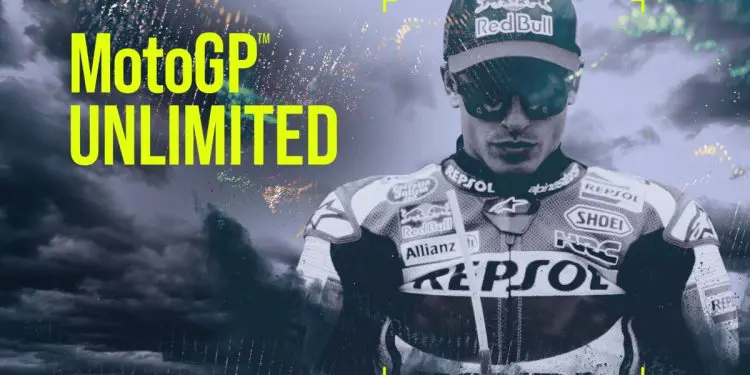In the fast-paced world of motorsports, the power of storytelling can make or break a sport’s popularity. Netflix’s “Drive to Survive” has not only revitalized Formula 1 but has set a new benchmark for sports documentaries. Conversely, “MotoGP Unlimited,” despite its high expectations, seems to have fallen short, potentially damaging MotoGP’s appeal to future fans. This juxtaposition offers a profound insight into how media representation can shape public perception and influence a sport’s growth.
Drive to Survive: A Formula for Success
Reviving Interest: “Drive to Survive” premiered on Netflix in 2019, offering an unprecedented behind-the-scenes look at Formula 1. The series didn’t just document races; it told compelling human stories, highlighted rivalries, and showcased the emotional rollercoaster of the sport. This approach drew in not just existing fans but also attracted a new, younger audience who were previously indifferent to F1.
Humanizing the Sport: One of the key successes of “Drive to Survive” is its ability to humanize the sport. By focusing on the personalities of drivers, team principals, and other key figures, it created a narrative that was relatable and engaging. The series showed the pressure, the triumphs, and the heartbreaks, making viewers invest emotionally in the sport and its characters.
Boosting Viewership and Engagement: The impact of the series on Formula 1’s viewership has been significant. According to Nielsen Sports, Formula 1 saw a 40% increase in viewership among young adults aged 16-35 after the release of “Drive to Survive.” The sport’s digital engagement also surged, with a 99% increase in social media interactions, showcasing the power of a well-executed documentary series.
Expanding the Fan Base: “Drive to Survive” has been instrumental in expanding Formula 1’s fan base beyond traditional markets. In the United States, where Formula 1 has historically struggled to gain a foothold, the series has contributed to a 58% increase in viewership on ESPN. This growth is indicative of the show’s success in making the sport more accessible and exciting to a broader audience.
Commercial Success: The commercial benefits of “Drive to Survive” are evident. Increased viewership translates to higher broadcasting rights and sponsorship deals. Teams have reported a surge in merchandise sales and increased interest from sponsors keen to capitalize on the sport’s newfound popularity.
MotoGP Unlimited: A Missed Opportunity
Falling Short of Expectations: “MotoGP Unlimited,” available on Amazon Prime, aimed to replicate the success of “Drive to Survive” but has largely been seen as a missed opportunity. Despite having access to the same high-octane drama and charismatic personalities, the series failed to capture the essence of the sport in a way that resonated with viewers.
Lack of Narrative Depth: One of the critical shortcomings of “MotoGP Unlimited” is its lack of narrative depth. The series often comes across as a collection of disjointed episodes rather than a coherent story. It fails to delve deeply into the personal lives of the riders or the intricate dynamics within teams, missing out on the human element that made “Drive to Survive” so captivating.
Negative Perception: Instead of enhancing MotoGP’s image, “MotoGP Unlimited” has been criticized for focusing too much on the negatives. The series often highlights the sport’s challenges and controversies without balancing them with the triumphs and joys. This skewed portrayal can deter potential fans, giving them an impression of a sport mired in issues rather than one of thrilling competition and passionate rivalries.
Missed Engagement Opportunities: Unlike “Drive to Survive,” which actively engages viewers with social media tie-ins and interactive content, “MotoGP Unlimited” lacks a robust engagement strategy. The series has not been able to capitalize on digital platforms to create a buzz or foster a community of dedicated followers.
Impact on Future Fans: The long-term impact of “MotoGP Unlimited” on the sport’s fan base could be detrimental. A poorly received documentary can create a lasting negative impression, making it harder for the sport to attract and retain new fans. MotoGP risks being perceived as less exciting or engaging compared to other motorsports, potentially losing out on a generation of fans.
Lessons for Sports Documentaries
Balancing Drama with Positivity: One of the key lessons from the success of “Drive to Survive” is the importance of balancing drama with positivity. While conflicts and controversies add excitement, they need to be balanced with moments of triumph and joy to create a well-rounded narrative that appeals to viewers.
Humanizing Athletes: Humanizing athletes and showcasing their personal journeys can create a deeper emotional connection with the audience. Viewers are more likely to become invested in a sport if they can relate to the people involved and understand their motivations and challenges.
Engaging Storytelling: Effective storytelling is crucial in drawing in viewers. A coherent, engaging narrative that builds tension and keeps viewers hooked is essential. This involves careful planning, creative direction, and a focus on the most compelling aspects of the sport.
Leveraging Digital Platforms: Utilizing digital platforms to engage with viewers beyond the series is vital. Interactive content, social media engagement, and exclusive behind-the-scenes footage can help build a dedicated community of fans and keep the conversation going.
“Drive to Survive” has set a gold standard for sports documentaries, showing how powerful storytelling can revitalize a sport and expand its fan base. In contrast, “MotoGP Unlimited” has highlighted the pitfalls of a poorly executed documentary, potentially damaging the sport’s image and deterring future fans. As the world of sports continues to evolve, the lessons learned from these two series will be crucial for any sport looking to engage with a global audience and secure its place in the competitive entertainment landscape.






